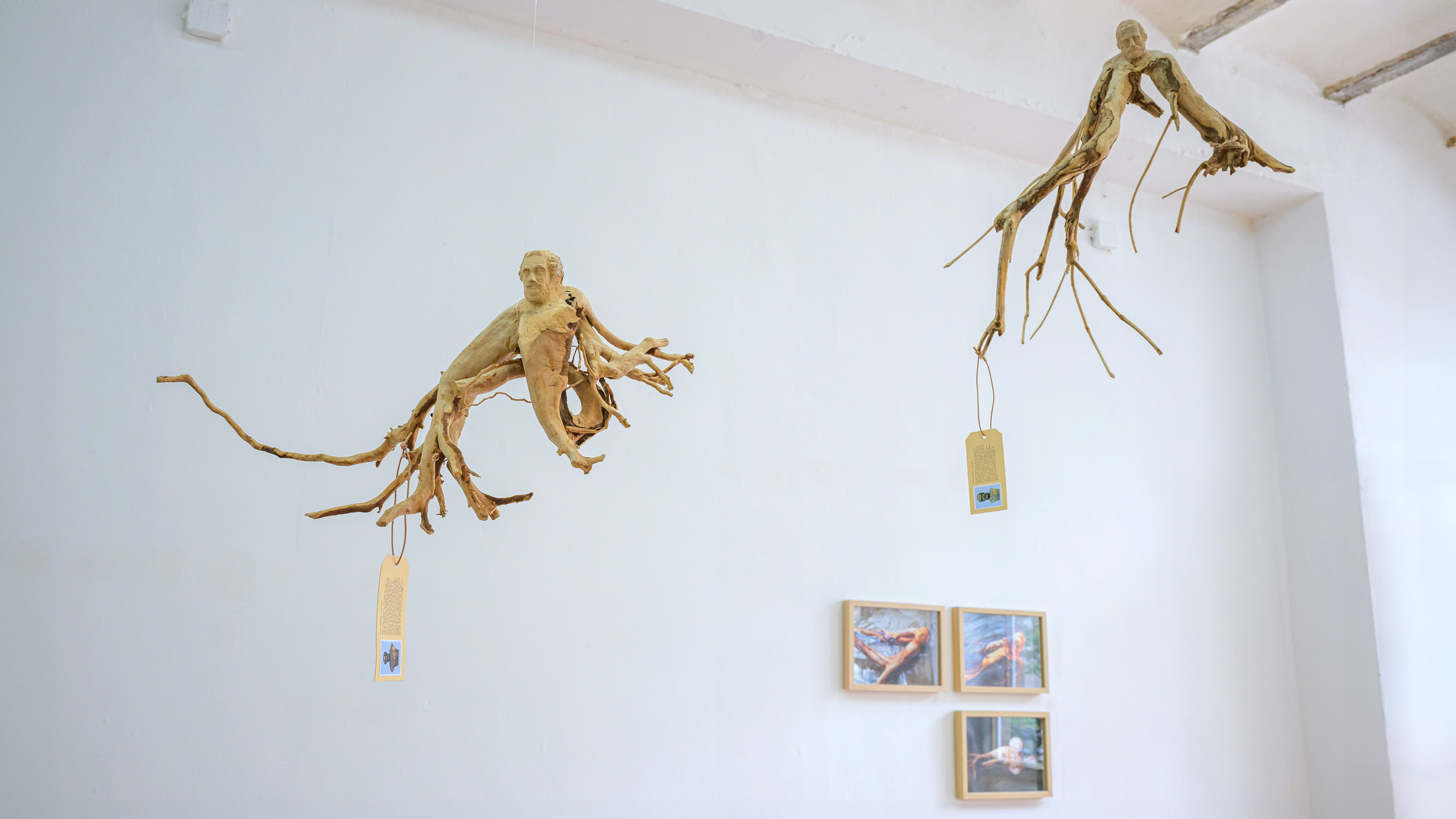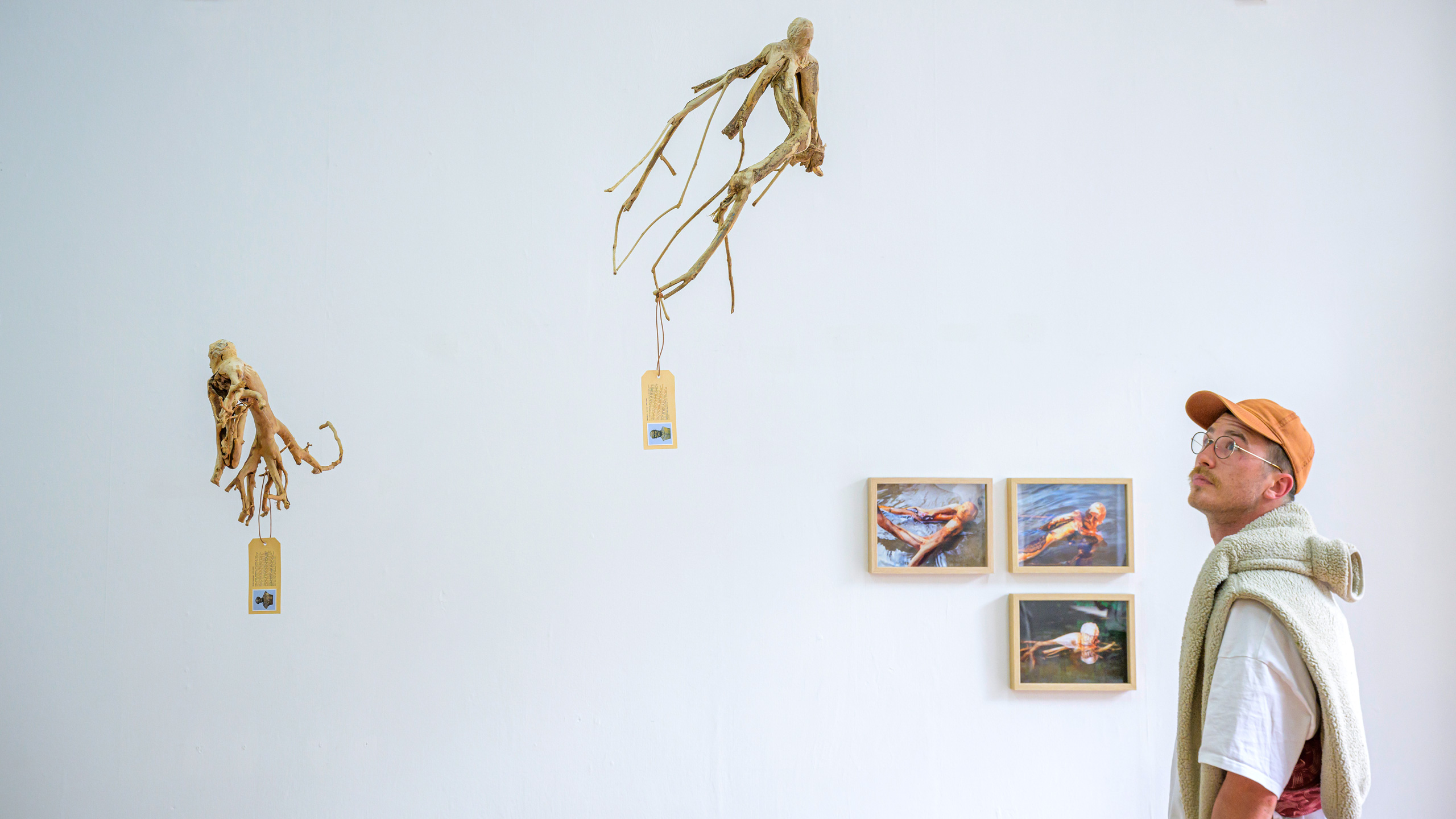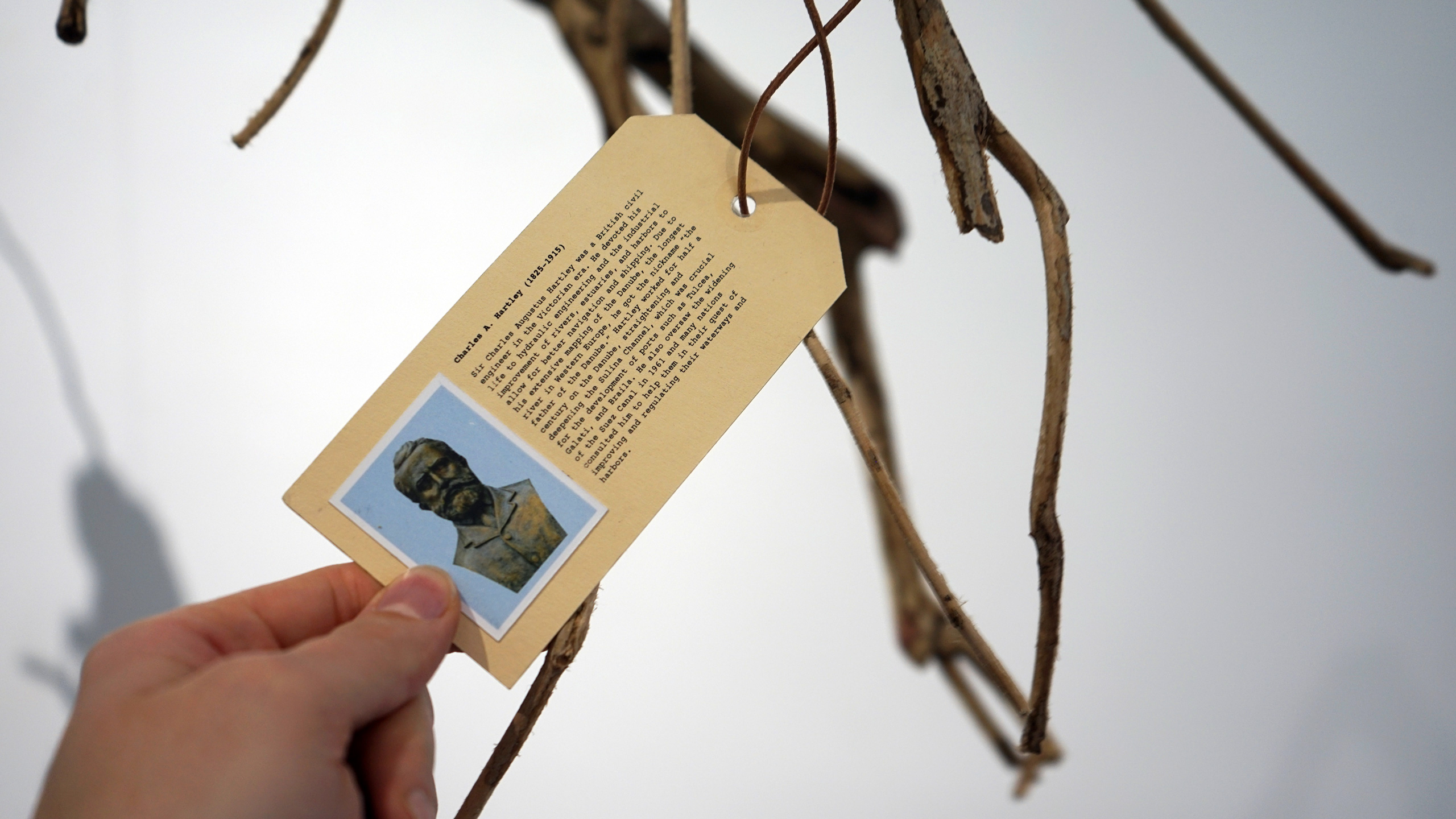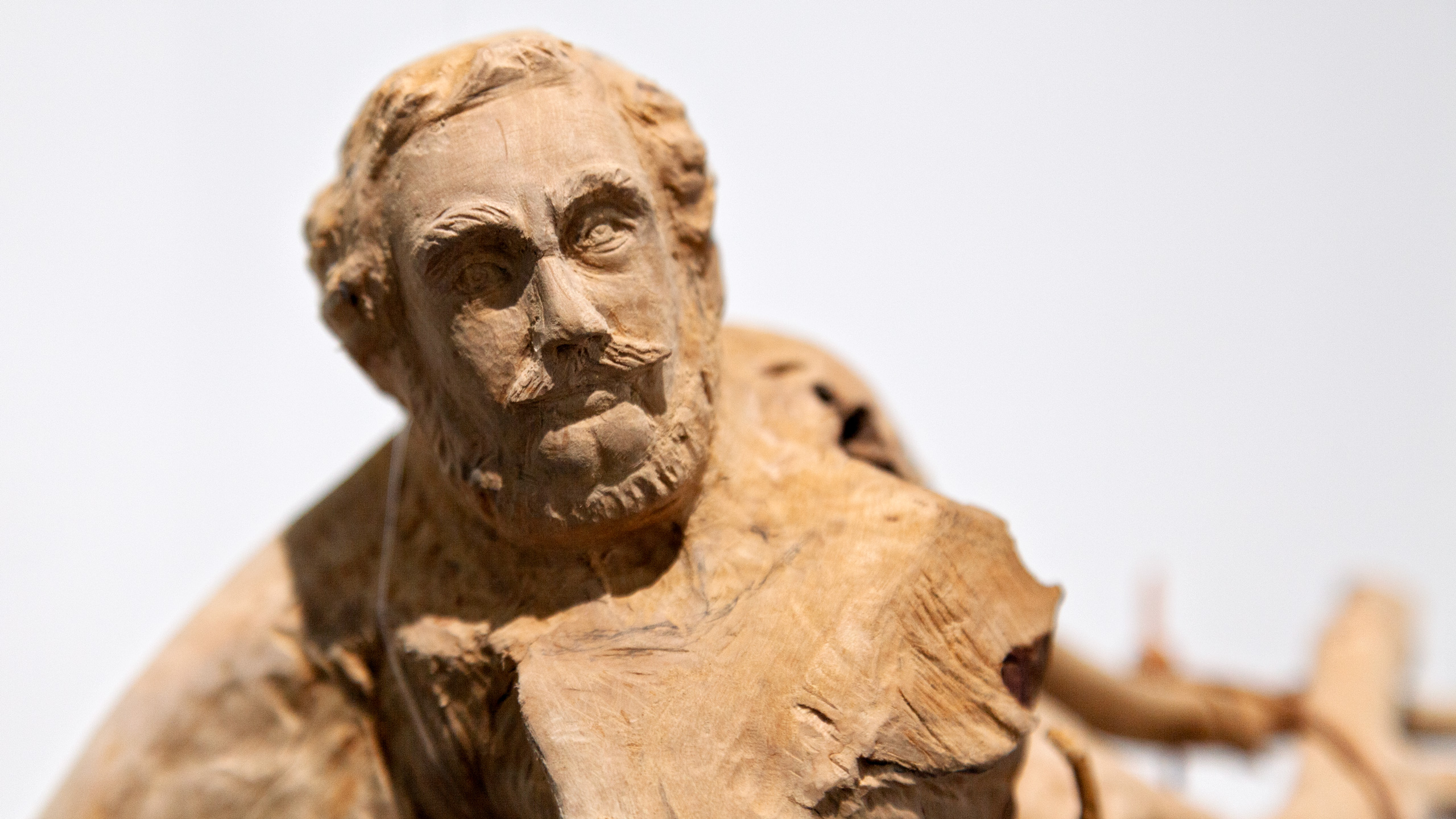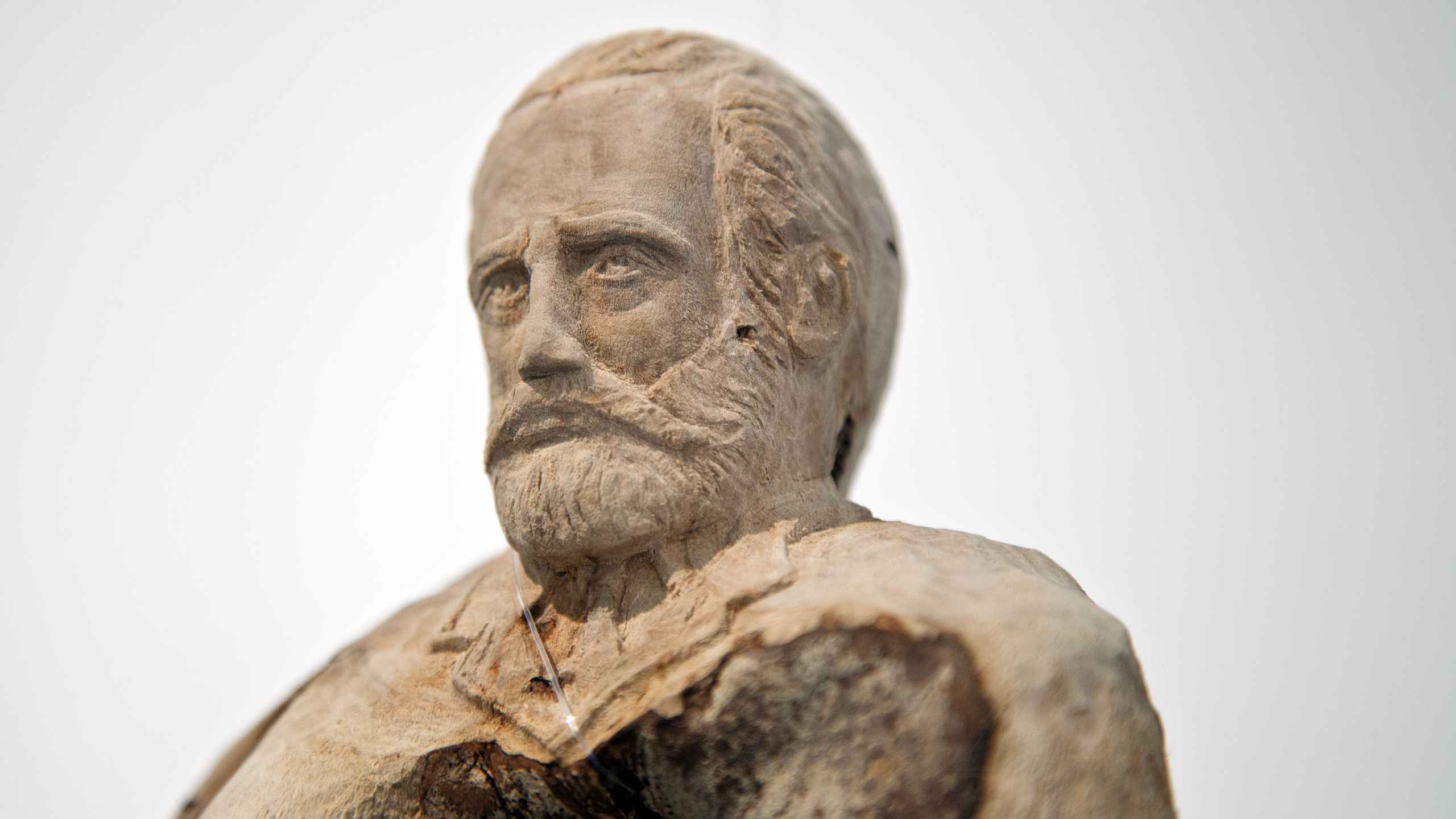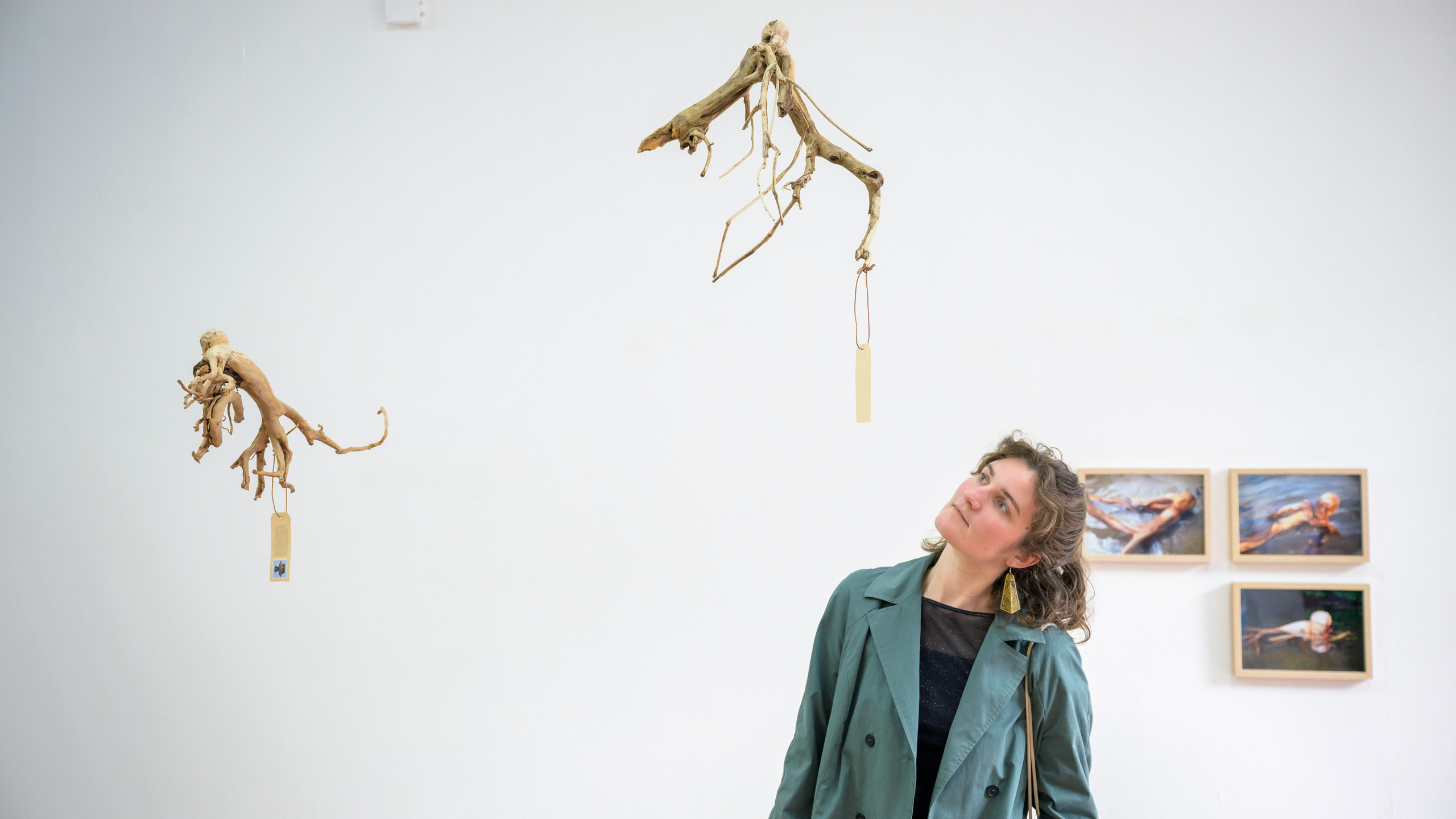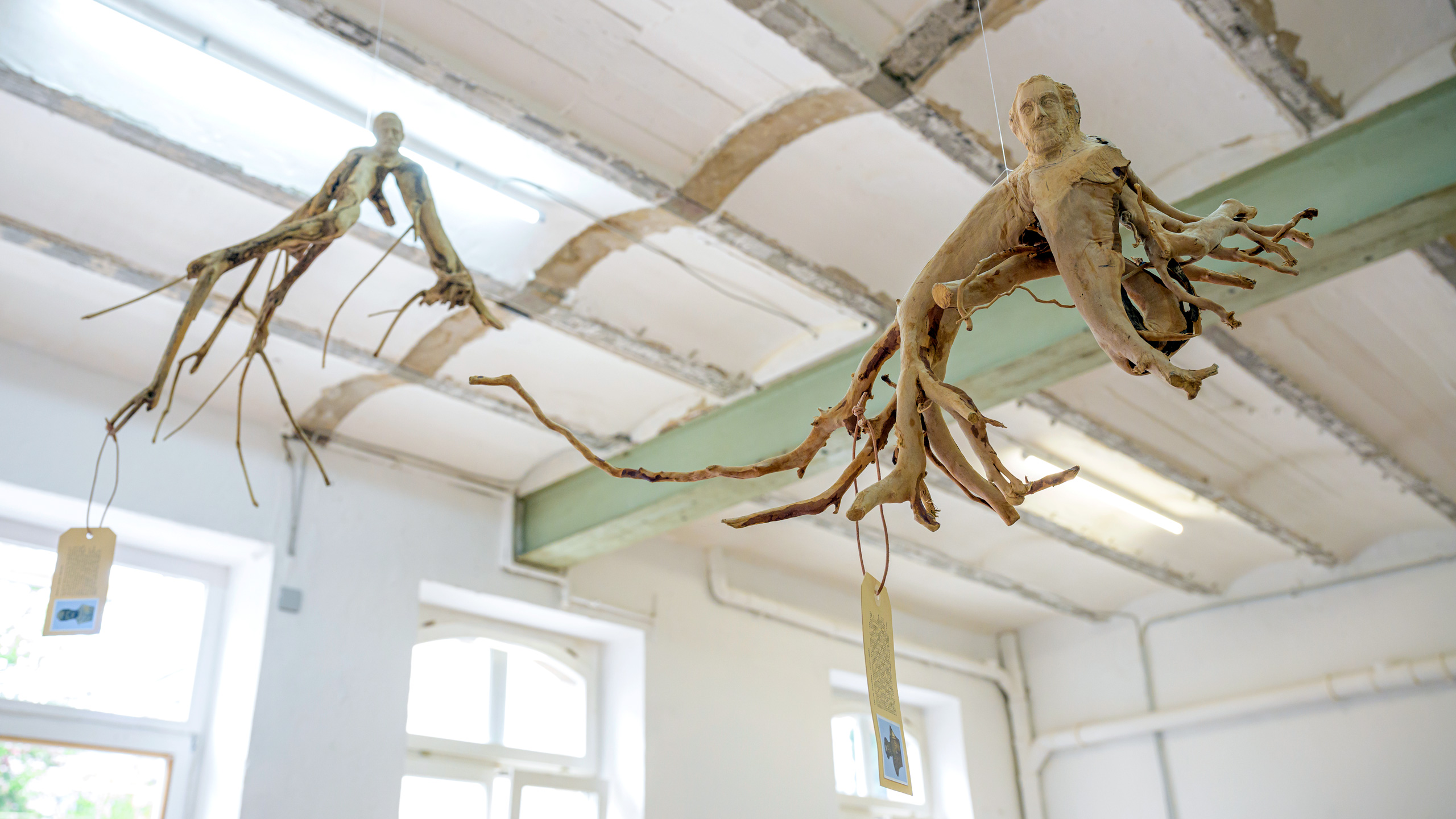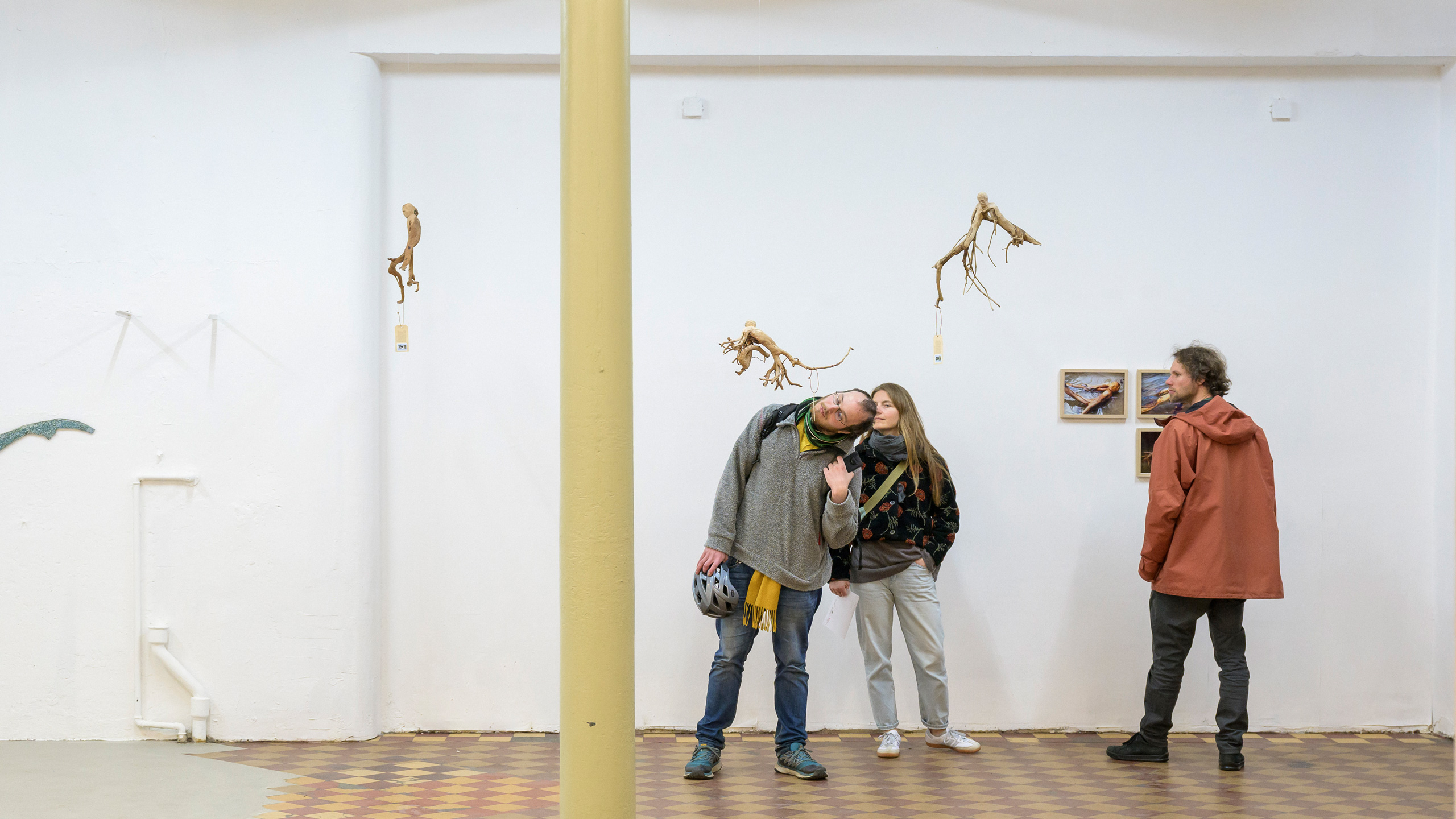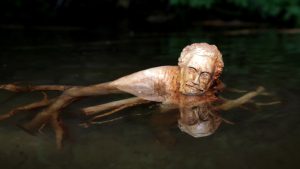Floating Fathers has been developed in the context of the “Your Water Our Water” exhibition cycle, that took place throughout 2024 in three art spaces along the Danube River. The carved portraits in the exhibition are based on original sculptures of industrialists, engineers and statesmen who have worked on the modernization and industrialization of the river. Many of these people are well-known historical figures, who’s legacies are honoured and remembered through monuments and busts standing in the towns and cities along the Danube. The aim of the project is to renew attention to these historical protagonists by making replicas of monuments out of natural materials that will be placed inside the river, so they can function as patron saints, contributing directly to its restoration, in a cultural as well as ecological sense. The exhibition showed several maquette prototypes that will form the basis for larger sculptures in public space. For the last iteration in Belgrade, one of such larger prototypes was made public and eventually brought to the river during a performance.
Up until into the 19th century, the Danube was an untamed river. But since the industrial revolution, the riverine environment was drastically altered through extensive industrialisation and regulation. To protect the area from flooding and to improve the conditions for navigation, engineers started to remove the original features of the river, such as stone barriers, shallow spots, sand bars, islands, and bends. During the last two centuries hundreds of engineers have worked on the alteration of the river, transforming the Danube into an uninterrupted connection between Central Europe and the Black Sea.
In anthropogenic times, the heroic tale of modernisation took a turn. Globally, we witness the dire consequences of modern industrialisation on the natural environment and there is an increased awareness, leading to projects that “make up” for the large, capitalist inventions of the last centuries. Locally, the climate crisis results in more wildfires, melting glaciers and unstable weather patterns, all phenomena continuously impacting and forming the Danube river. For a long time, it was thought that the river could be tamed, regulated and made fit for human exploration, but the effects of the climate crisis turned the river anew into an unpredictable force. Long periods of drought are followed by intense wet periods, increasing the likelihood of extreme flooding.
Currently, there are many renaturation and rewilding projects underway in different countries, targeted at restoring the river to its original state, enhancing its ability to adapt to the rapidly changing conditions. After the river is widened, it is again filled with ‘natural objects’, such as stones, sandbanks, tree roots and trunks, to recreate a primeval, deep time riverscape from before human intervention. These objects promote sedimentation, prevent erosion, and provide shelter and breeding grounds for birds and fish, improving the biodiversity of the watercourse in general. The project’s aim is to critically look at the choices that are being made in the design process of this paradoxical “designed wilderness” and come up with alternative objects that can be placed in the river that not only gimmick a natural process but also account for the turbulent history of modernization, so that the past is not forgotten nor denied, for there are important lessons to be learned from it. Our idea is to merge the sculptures of the industrial “founding fathers” of the modern Danube with the material entity of trees and stones, transforming them into a ‘mutant’ objects. It is meant to symbolize the reunification between people and nature and helps us in the difficult task of rethinking dichotomies of nature and culture during the Anthropocene.


